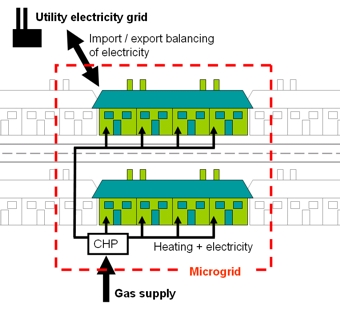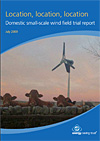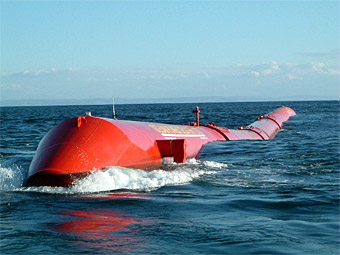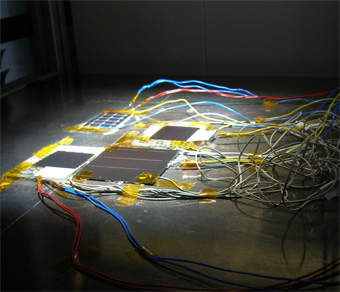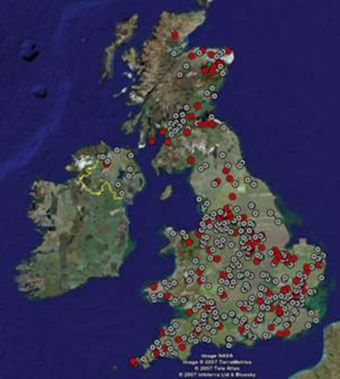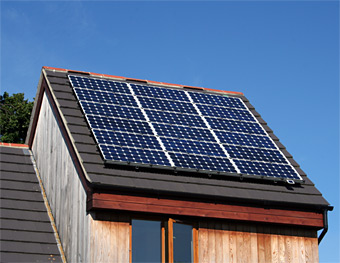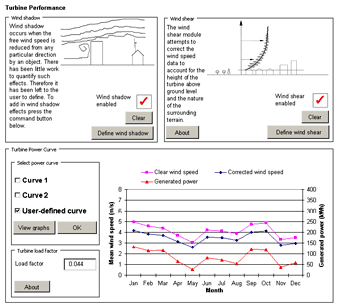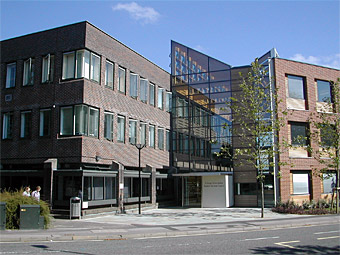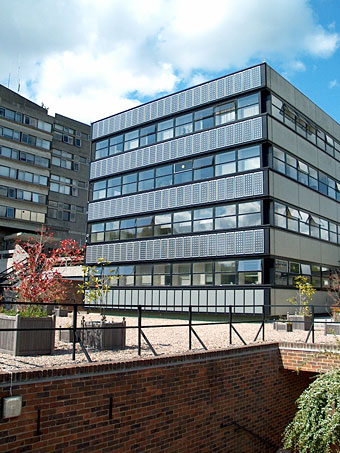The Anaconda wave energy converter, which is shown as an artist’s impression in Figure 1, is a novel concept for wave energy conversion invented by Rod Rainey and Francis Farley and further developed by the licensed manufacturers Checkmate SeaEnergy Ltd. The system essentially consists of a rubber tube filled with water which is placed in the […]
Renewable Energy Activities
The group’s research is looking at existing housing developments from the 1970s, 1980s, 1990s and 2000s to determine the scope and potential impact of microgeneration technologies and energy efficiency measures on the residential scale. Microgeneration options assessed include: Photovoltaics Micro wind power Solar thermal systems for domestic hot water CHP (combined heat and power) at […]
Within the UK microwind trial research project funded by the Energy Saving Trust members of SERG have produced a report integrating issues of domestic wind speed prediction, measured performance results of the field studies, the potential market for small-scale wind turbines, customer feedback and recommendations for domestic consumers. Energy Saving Trust
The ability to measure accurately the wave energy resource at a given site is essential for the successful development of wave farms. The likelihood of success must be assessed before a project goes ahead. A collaborative project between the University of Southampton and Pelamis Wave Power Ltd (PWP) is currently aiming at providing a wave […]
Acheiving low cost, non-toxic, high efficiency, high throughput solar cells is the ultimate challenge for the solar energy industry. Traditional glass laminate crystalline silicon solar cells offer relatively high efficiency (up to 20%) but are an expensive product. At SERG research and development of low cost sputtered amorphous silicon solar cells on flexible substrates is […]
The UK has the best wind resource in Europe and this is now starting to be harnessed through both on-shore and off-shore multi-MW scale wind farms. Micro wind power technology, which is essentially the installation of small scale, 1-10 kW wind turbines on buildings or pole mounted as shown in Figure 1, is a rapidly […]
Residential grid connected PV systems are relatively simple to design with easy to predict annual yields. However, the headline economics of residential PV in the UK are at present unattractive. A typical small residential PV system (1 to 3 kWp) as shown in the top figure would cost in the year 2000 around £4,500 per […]
Within the framework of a research project funded by the Economic & Social Research Council (ESRC) a micro wind modelling tool has been developed by SERG prompted by the imminent arrival of the technology. The tool allows the user to define a particular micro wind turbine and simulate its performance at various locations in the UK. Various […]
The University of Southampton has three permanently grid connected PV systems on its Highfield Campus designed and serviced by the Sustainable Energy Research Group. The installed capacity of these three facilities is about 20 kWp: (a) George Thomas Building – 12.2 kWp atrium (b) Building 2 – 7.2 kWp vertical façade (c) Eustice Building – […]
Silicon wafer solar cells have a low working voltage (~0.5 V) and so must be connected electrically in series to become useful. A ‘standard’ PV module consists of 36 cells in series, producing a maximum power point voltage of ~18 V suitable for charging a 12 V dc battery with a charge regulator. Grid connected […]
